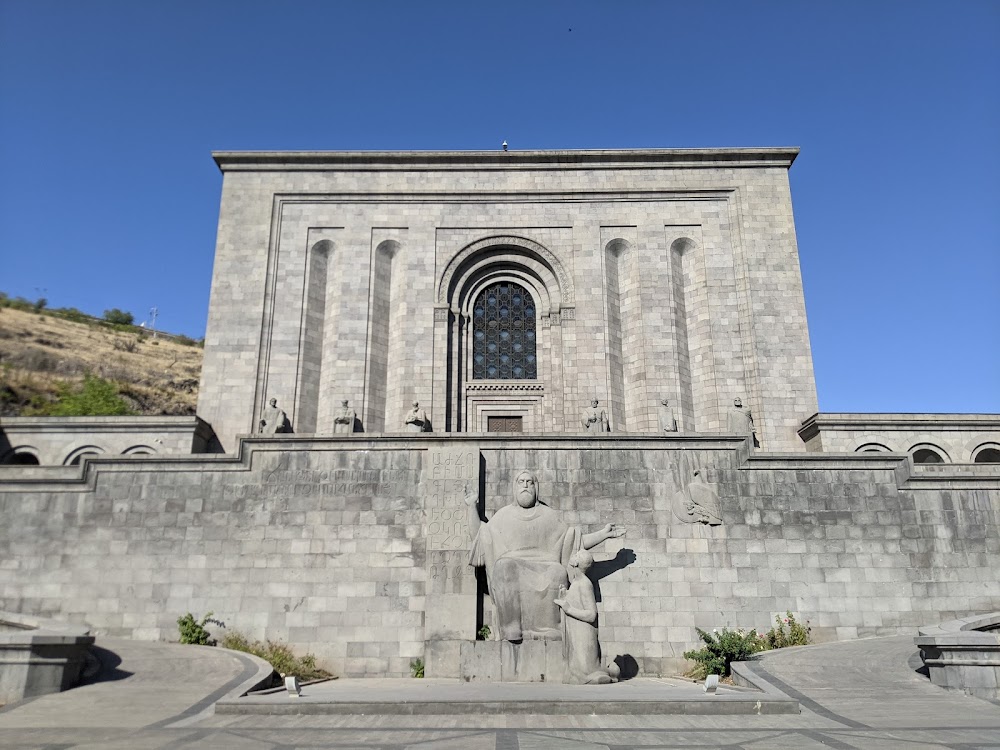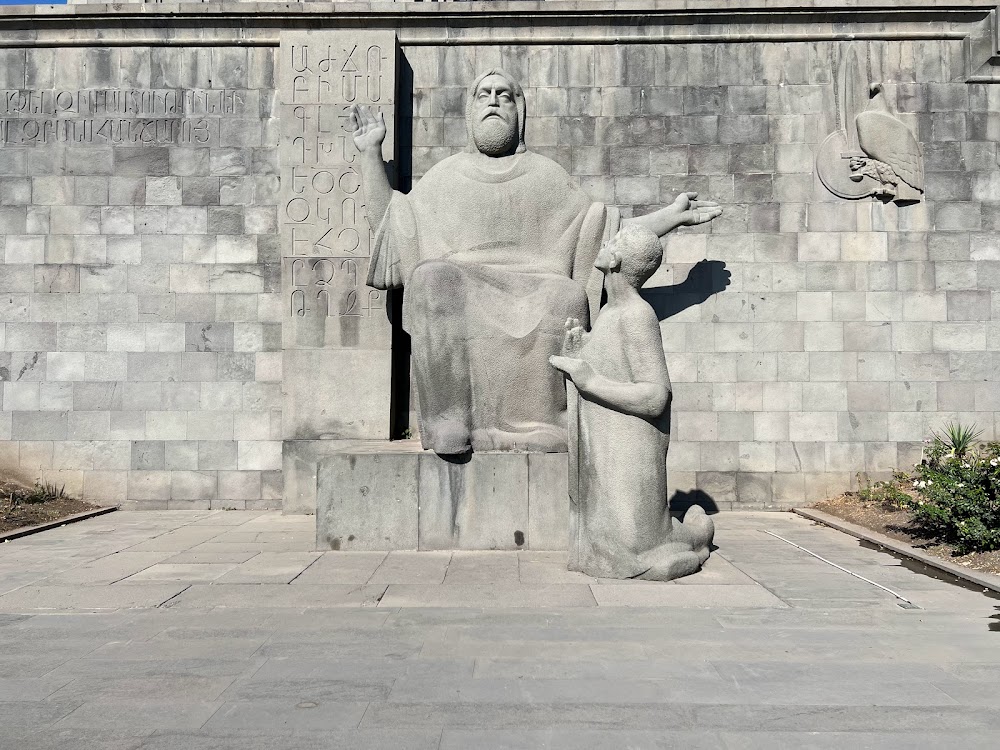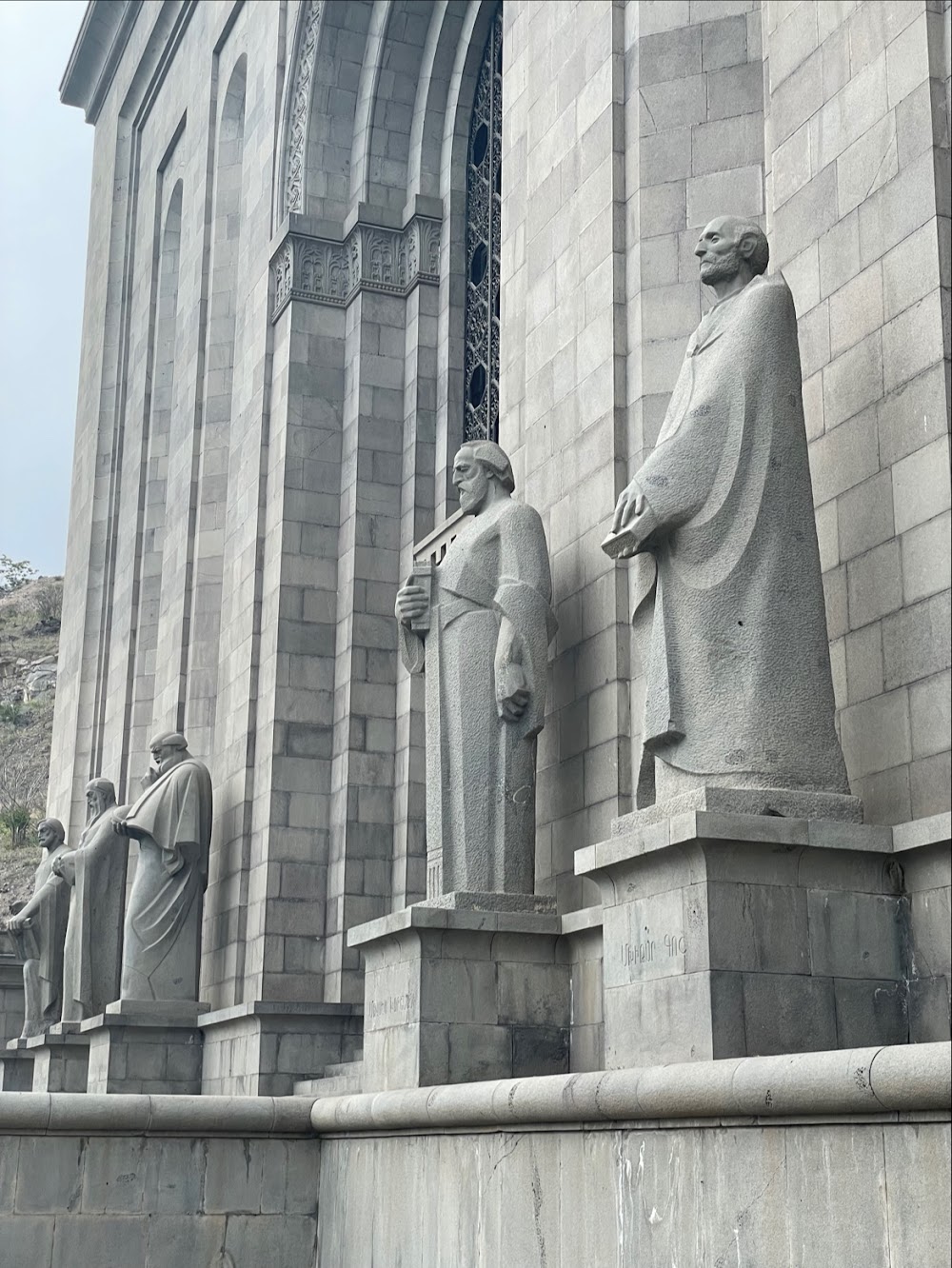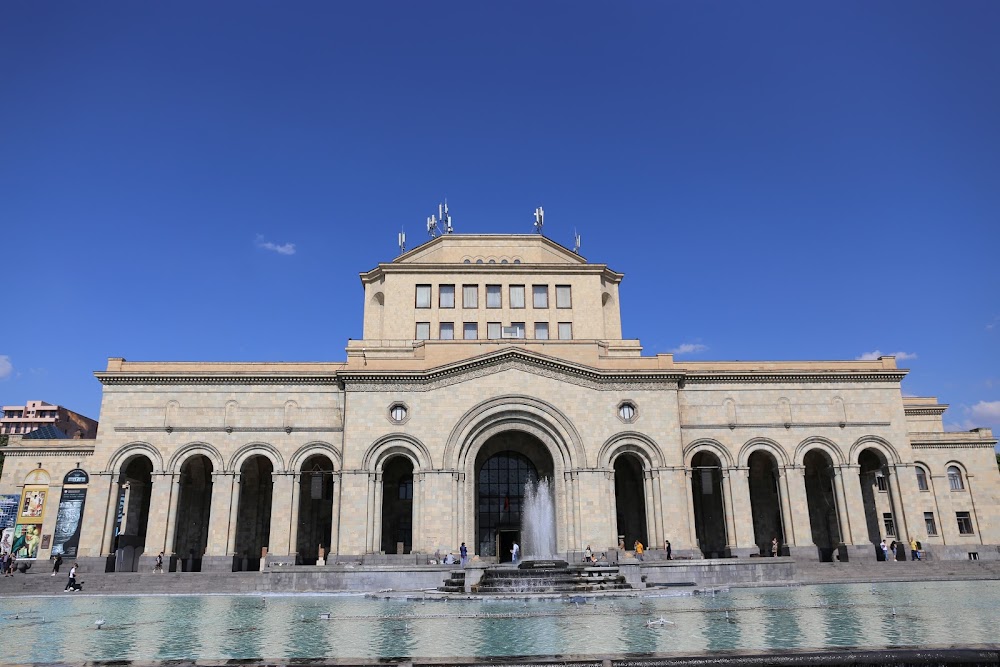Matenadaran (Մատենադարան)
Overview
Matenadaran: A Repository of Armenian Heritage
Matenadaran, officially known as the Mesrop Mashtots Institute of Ancient Manuscripts, is a remarkable institution located in Yerevan, Armenia. It serves as a treasure trove of ancient texts and stands as a proud symbol of Armenian cultural heritage. The roots of Matenadaran can be traced back to antiquity, when manuscripts played a vital role in safeguarding knowledge, culture, and identity.
The concept of establishing a central repository for manuscripts began to take shape in the early 20th century. In 1920, the Soviet Armenian government nationalized more than two thousand manuscripts, which formed the backbone of Matenadaran's extensive collection. However, it wasn't until 1959 that the modern Matenadaran building was inaugurated, strategically positioned at the end of Mesrop Mashtots Avenue in Yerevan.
Architectural Marvel
Designed by the talented Armenian architect Mark Grigoryan, the building itself is a stunning blend of traditional Armenian architectural elements infused with modern influences. Its monumental facade is adorned with intricate stone carvings and statues of esteemed Armenian scholars, including Mesrop Mashtots, the creator of the Armenian alphabet, as well as other notable figures like Movses Khorenatsi and Anania Shirakatsi.
The construction utilized local stones, specifically basalt and tufa, which are characteristic of Armenian architecture. This choice of materials and design reflects the enduring aspects of Armenian history and identity, underscoring the importance of preserving cultural continuity.
A Wealth of Manuscripts
Inside Matenadaran, visitors will find over 23,000 manuscripts, documents, and books that span a wide range of subjects—from medieval religious texts to scientific works and literature. These manuscripts are written in various languages, including Armenian, Greek, Latin, Persian, Arabic, and more, showcasing Armenia’s historical connections and interactions with diverse cultures.
Among the institute's prized possessions is the Echmiadzin Gospel, an exquisite illuminated manuscript from the 10th century, celebrated for its artistic and historical significance. Matenadaran also houses a significant collection of archival documents dating back to the 5th century, further enriching its vast holdings.
Preservation and Research
Considerable effort has gone into the conservation and restoration of these ancient texts. Matenadaran is equipped with advanced facilities and a dedicated team of experts committed to preserving these invaluable manuscripts. Modern technologies, including digitalization, have been embraced to safeguard the manuscripts for future generations while making them accessible to scholars and the public worldwide.
Beyond being a mere repository, Matenadaran is a vibrant research institution. Scholars from various disciplines—including history, philology, and theology—frequently visit to study the manuscripts. The institute also hosts international conferences, workshops, and exhibitions, fostering a spirit of global academic exchange and collaboration.
Visitor Experience
The Matenadaran Museum, part of the institute, welcomes the public and offers a fascinating glimpse into the vast array of manuscripts and the history of Armenian written culture. Visitors can enjoy a rotating selection of treasures, each displayed with careful curation to educate and inspire.
In recent years, Matenadaran has expanded its facilities with the addition of a new wing in 2011, designed to accommodate the growing collection and enhance the research capabilities of the institute. This expansion ensures that Matenadaran remains at the forefront of manuscript preservation and study.
A Beacon of Cultural Heritage
Matenadaran serves as a beacon of Armenian heritage, symbolizing the resilience of a culture that has weathered numerous challenges throughout history. It stands as a testament to the enduring power of knowledge and the written word.
Today, Matenadaran is not only a guardian of ancient manuscripts but also a vibrant center for learning and cultural exchange. It continues to inspire and educate future generations about the rich legacy of Armenia’s literary and scholarly achievements.







